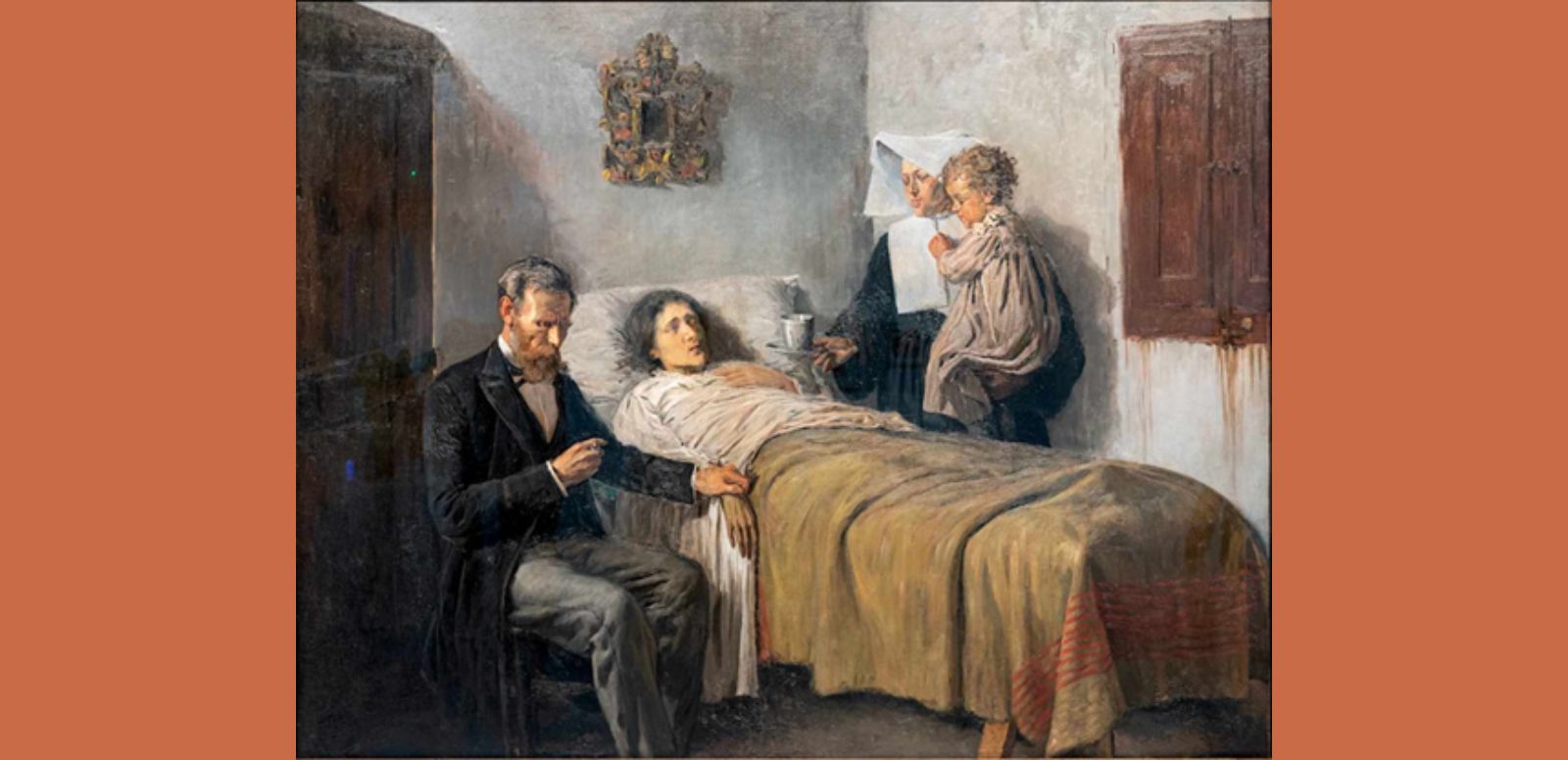
Museu Picasso Barcelona. Donación de Pablo Picasso, 1970
© Sucesión Picasso, VEGAP, Madrid, 2024
Science and Charity (1897) is an emblematic work of Picasso's youth, painted in 1897 with the express purpose of gaining recognition in the academic artistic circles of the time. This painting, presented at the General Exhibition of Fine Arts of 1897 held in Madrid, complies with the precepts of social realism, a predominant artistic trend in the late nineteenth century.
The choice of subject matter was influenced by Picasso's father, José Ruiz, who sought to ensure his son's success at the exhibition. He chose to depict a scene that would unite modern medicine, represented by the doctor, and pious assistance, personified by Sister Charity on the left of the painting.
Models were essential in order to produce paintings like this one. Therefore, José Ruiz posed as a model for the main figure of the doctor and hired a model to represent the sick woman, while the uniform of the young Sister of Charity was borrowed from a friend of the family in order to ensure the greatest fidelity to reality.
In terms of technical execution, Picasso demonstrated his ability to follow academic canons and achieve realism in composition. Through a series of preparatory sketches, the artist experimented with the arrangement and gestures of the figures until he achieved the desired effect.
Sources:
Museu Picasso Barcelona: https://museupicassobcn.cat/es/coleccion/obra-de-arte/ciencia-y-caridad
RTVE Audio. Los cuadros de Picasso, capítulo 2: https://rtve.es/play/audios/los-cuadros-de-pablo/capitulo-2-ciencia-caridad/6847093/

